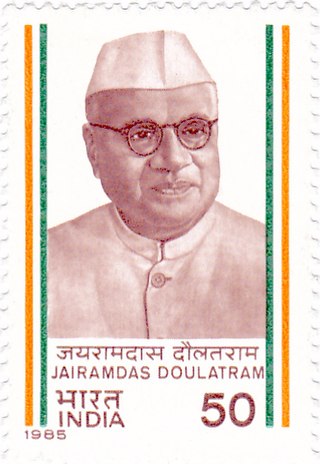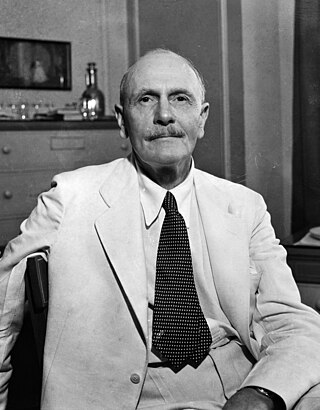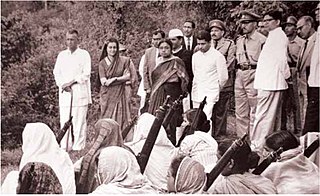
The Indian Administrative Service (IAS) is the administrative arm of the All India Services of Government of India. The IAS is one of the three arms of the All India Services along with the Indian Police Service and the Indian Forest Service. Members of these three services serve the Government of India as well as the individual states. IAS officers are also deployed to various government establishments such as constitutional bodies, staff and line agencies, auxiliary bodies, public sector undertakings, regulatory bodies, statutory bodies and autonomous bodies.

The Indian Foreign Service (IFS) is the diplomatic service and a central civil service of the Government of India under the Ministry of External Affairs. The Foreign Secretary is the head of the service. Vinay Mohan Kwatra is the 34th and the current Foreign Secretary.

The Special Frontier Force (SFF) is an Indian special forces unit composed primarily of Tibetan refugees and Gurkhas in India. It was established after the Sino-Indian War of 1962 to primarily conduct covert operations behind the Chinese lines in case of another war with China. Later it increased in size and scope of operations.
Kaul is a Kashmiri surname that is used by the Kashmiri Pandit community in India.

The British expedition to Tibet, also known as the Younghusband expedition, began in December 1903 and lasted until September 1904. The expedition was effectively a temporary invasion by British Indian Armed Forces under the auspices of the Tibet Frontier Commission, whose purported mission was to establish diplomatic relations and resolve the dispute over the border between Tibet and Sikkim. In the nineteenth century, the British had conquered Burma and Sikkim, with the whole southern flank of Tibet coming under the control of the British Indian Empire. Tibet ruled by the Dalai Lama under the Ganden Phodrang government was a Himalayan state under the protectorate of the Chinese Qing dynasty until the 1911 Revolution, after which a period of de facto Tibetan independence (1912–1951) followed.

The Ministry of Home Affairs, or simply the Home Ministry, is a ministry of the Government of India. It is mainly responsible for the maintenance of internal security and domestic policy. It is headed by Minister of Home Affairs.
Triloki Nath Kaul was one of India's foremost diplomats in the 20th century. A member of the Indian Civil Service (ICS), he served in the foreign service branch, culminating in his being appointed Foreign Secretary twice. He was ambassador to several countries.

Yatung or Yadong, also known as Shasima , is the principal town in the Chumbi Valley or Yadong County in the Tibet Autonomous Region of China. It is also its administrative headquarters.

Sashastra Seema Bal is a border guarding force of India deployed along its borders with Nepal and Bhutan. It is one of the seven Central Armed Police Forces under the administrative control of the Ministry of Home Affairs (MHA).
Delhi, Andaman and Nicobar Islands, Lakshadweep, Dadra and Nagar Haveli and Daman and Diu Civil Service is now called Delhi, Andaman, Nicobar Islands, Lakshwadeep, Dadra Nagar Haveli and Daman Diu Administrative Service (DANIAS) cadre civil servants are recruited directly through the Civil Services Examination and are responsible for the diverse administrative functions of the National Capital Territory of Delhi and the Union territories of India.

Jairamdas Daulatram (1891–1979) was an Indian political leader from Sindh, who was active in the Indian independence movement and later served in the Government of India. He was appointed as the Governor for the states of Bihar and later Assam. He played a key role in strengthening the North-East Frontier Tracts of India in the face of the Chinese annexation of Tibet, and managed the Indian integration of Tawang in 1951.

In India, the Central Armed Police Forces (CAPF) is the collective name of central police organisations under the Ministry of Home Affairs of India. These are technically paramilitary forces formerly known as the Central Para-Military Forces. Since 2011, India adopted the term "central armed police forces" to drop the word "paramilitary". These forces are responsible for internal security and guarding the borders.
The Dogra–Tibetan War or Sino-Sikh War was fought from May 1841 to August 1842, between the forces of the Dogra nobleman Gulab Singh of Jammu, under the suzerainty of the Sikh Empire, and those of Tibet, under the protectorate of the Qing dynasty. Gulab Singh's commander was the able general Zorawar Singh Kahluria, who, after the conquest of Ladakh, attempted to extend its boundaries in order to control the trade routes into Ladakh. Zorawar Singh's campaign, suffering from the effects of inclement weather, suffered a defeat at Taklakot (Purang) and Singh was killed. The Tibetans then advanced on Ladakh. Gulab Singh sent reinforcements under the command of his nephew Jawahir Singh. A subsequent battle near Chushul in 1842 led to a Tibetan defeat. A treaty was signed in 1842 maintaining the status quo ante bellum.
Vijayendra Nath Kaul was the tenth Comptroller and Auditor General of India (CAG) from 2002 to 2008. He was awarded the Padma Bhushan in 2014.
Demchok , previously called New Demchok, and called Parigas by the Chinese, is a village and military encampment in the Indian-administered Demchok sector that is disputed between India and China. It is administered as part of the Nyoma tehsil in the Leh district of Ladakh by India, and claimed by China as part of the Tibet Autonomous Region.

Lieutenant-Colonel Sir William Frederick Travers O'Connor was an Irish diplomat and officer in the British and British Indian armies. He is remembered for his travels in Asia, cartography, study and publication of local cultures and language, his actions on the Younghusband expedition to Tibet, Royal Geographic Society council member, member of the Royal Automobile Club and for his work negotiating and signing the Nepal–Britain Treaty of 1923.
The Demchok sector is a disputed area named after the villages of Demchok in Ladakh and Demchok in Tibet, situated near the confluence of the Charding Nullah and Indus River. It is a part of the greater Sino-Indian border dispute between China and India. Both China and India claim the disputed region, with a Line of Actual Control between the two nations situated along the Charding Nullah.

Tibet–India relations are said to have begun during the spread of Buddhism to Tibet from India during the 6th century AD. In 1959, the Dalai Lama fled to India after the failed 1959 Tibetan uprising. Since then, Tibetans-in-exile have been given asylum in India, with the Indian government accommodating them into 45 residential settlements across 10 states in the country, creating the Tibetan diaspora. From around 150,000 Tibetan refugees in 2011, the number fell to 85,000 in 2018, according to government data. Many Tibetans are now leaving India to go back to Tibet and other countries such as United States or Germany. The Government of India, soon after India's independence in 1947, treated Tibet as a de facto independent country. However, more recently India's policy on Tibet has been mindful of Chinese sensibilities, and has recognized Tibet as a part of China.
The Five Fingers of Tibet is a Chinese foreign policy attributed to Mao Zedong that considers Tibet to be China's right hand palm, with five fingers on its periphery: Ladakh, Nepal, Sikkim, Bhutan, and North-East Frontier Agency, that it is China's responsibility to "liberate" these regions.

The Directorate General of Security is an organisation of covert operations under India's Cabinet Secretariat. It is one of the four legally defined intelligence organisations of India and listed in the Schedule of the Intelligence Organisations Act, 1985, the other three being I.B., R&AW and NTRO. Since 1971, the Secretary, Research and Analysis Wing has usually held the post of Director General. This organisation used to be composed of Special Service Bureau, Aviation Research Centre, Special Frontier Force and Chief Inspectorate of Armaments. Since the shifting of SSB and CIOA to the Ministry of Home Affairs in 2001, DGS consists of ARC and SFF only. The Special Group, a non-Tibetan and Sarsawa-based unit of SFF, is also a DGS component.












